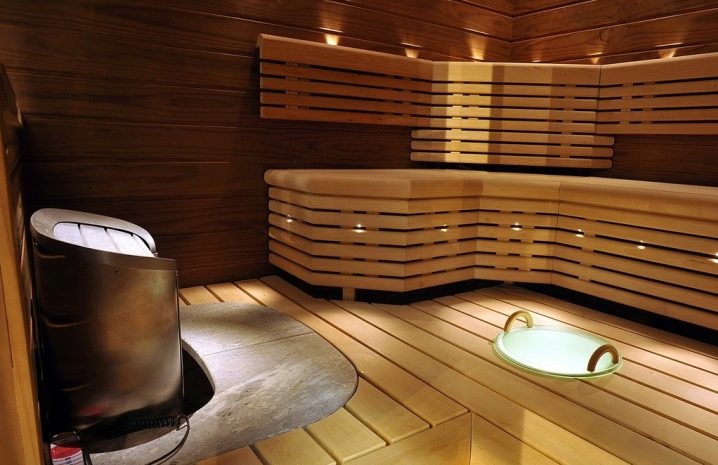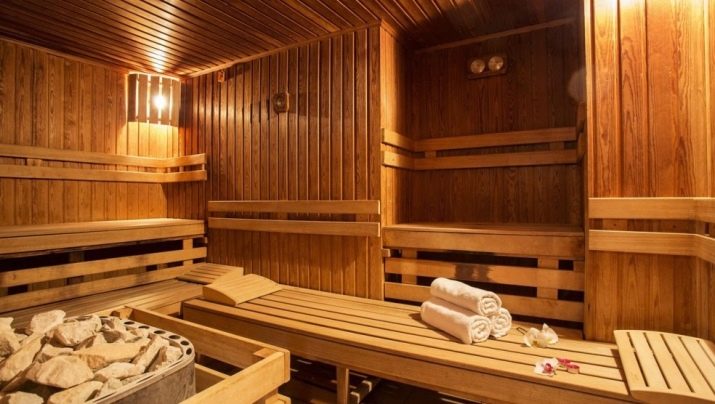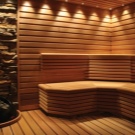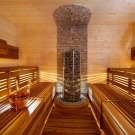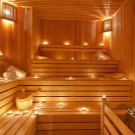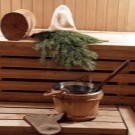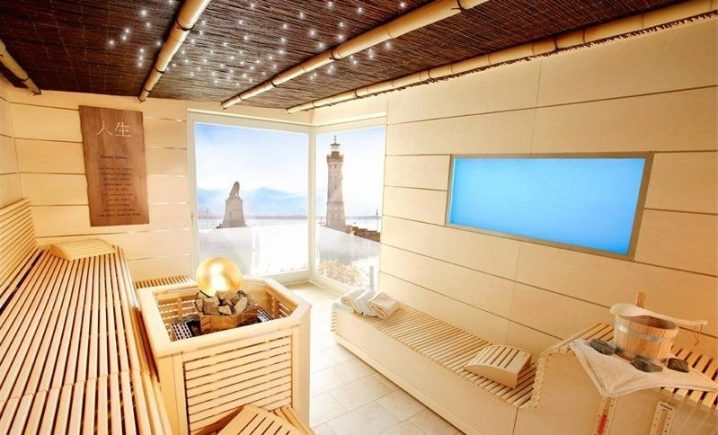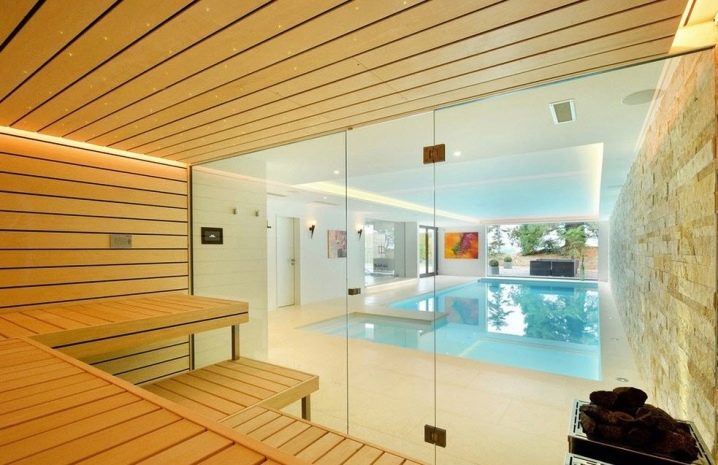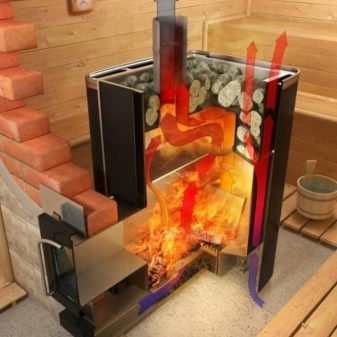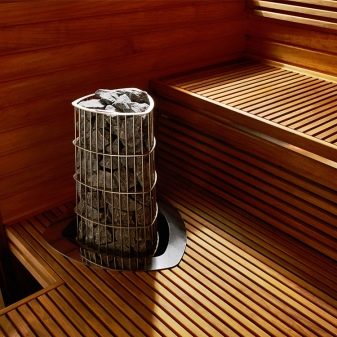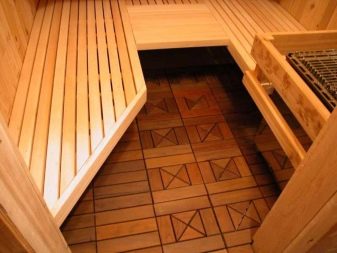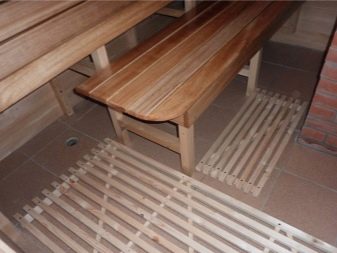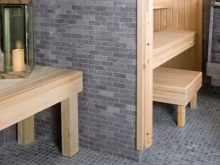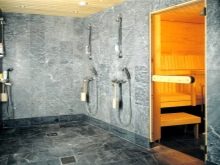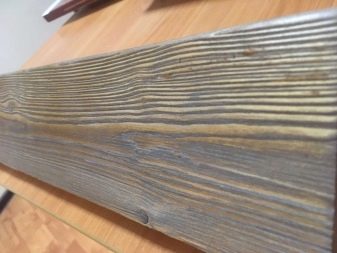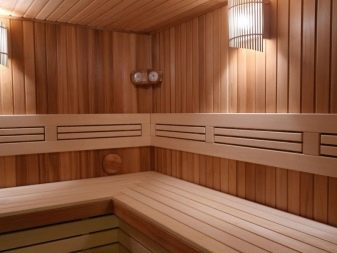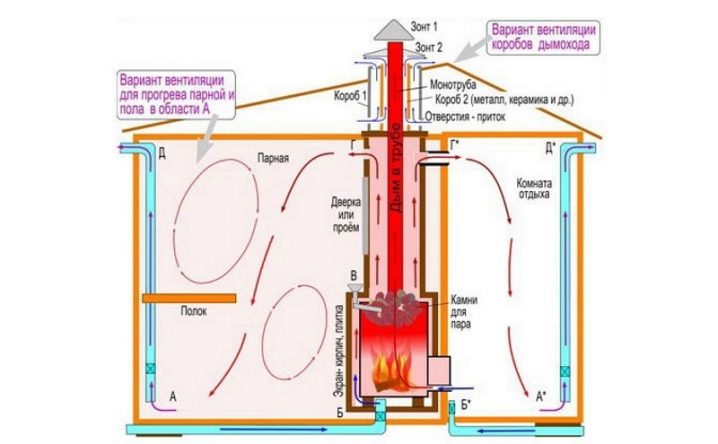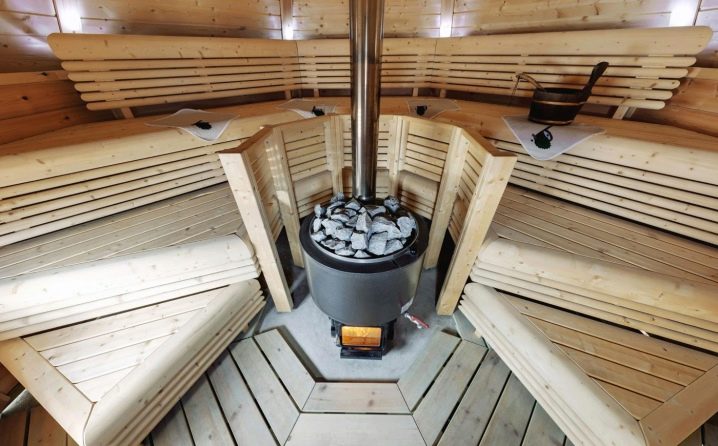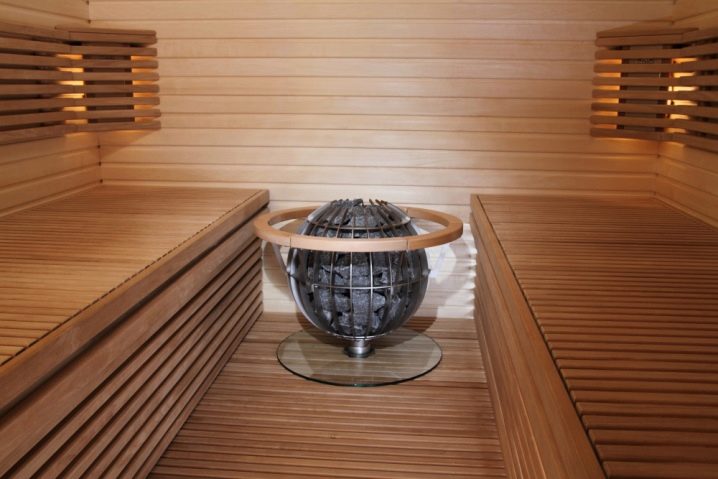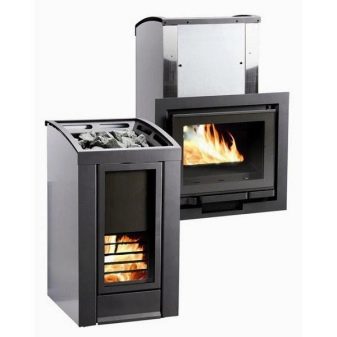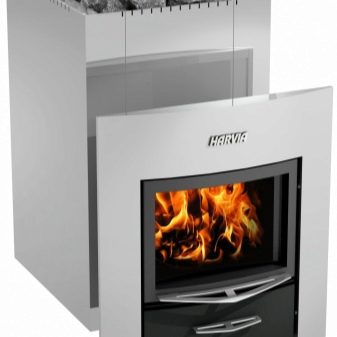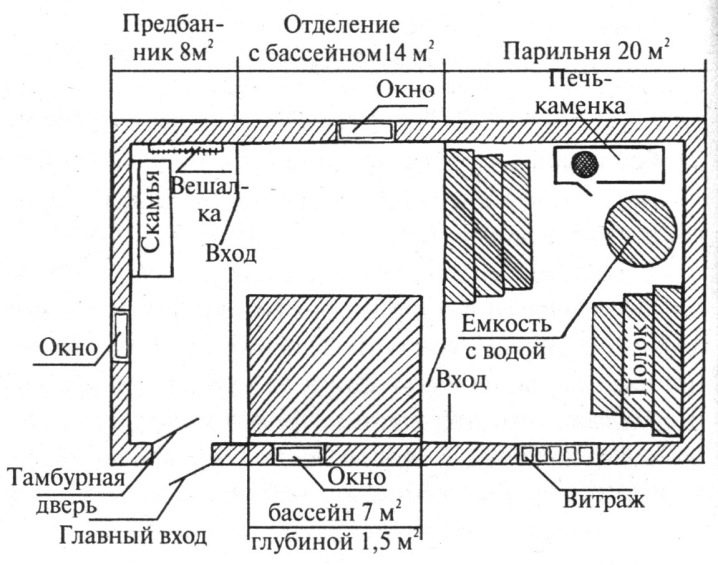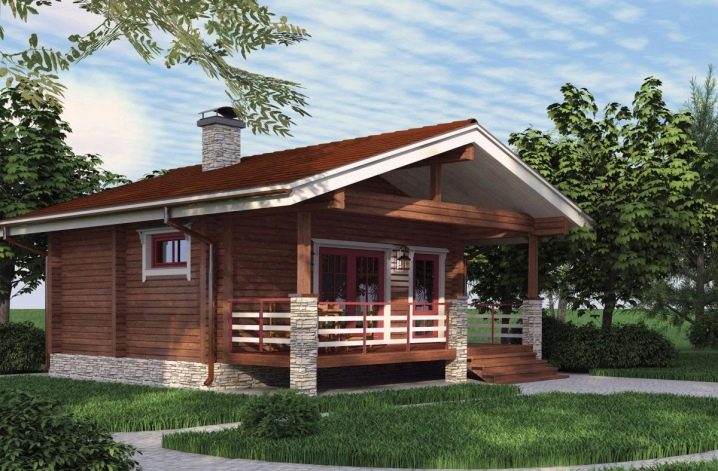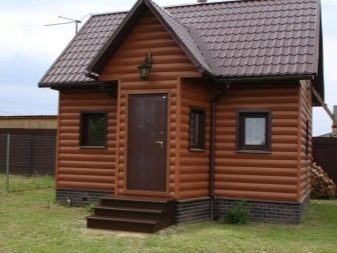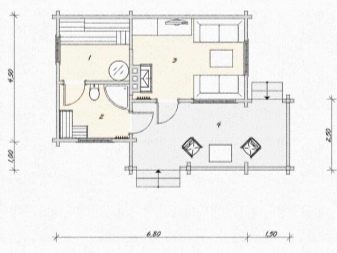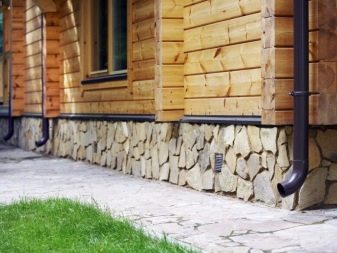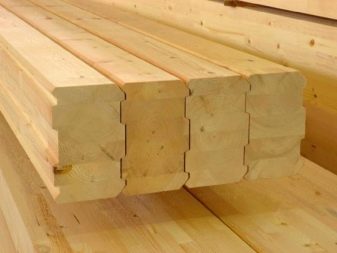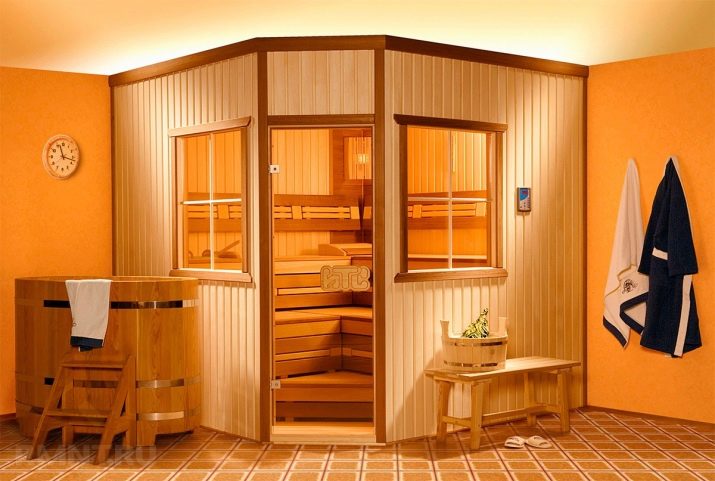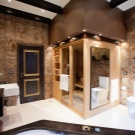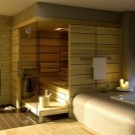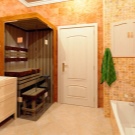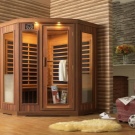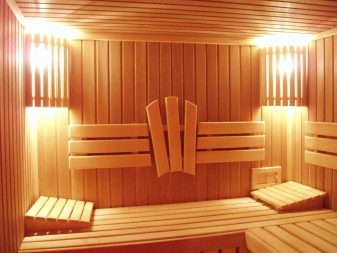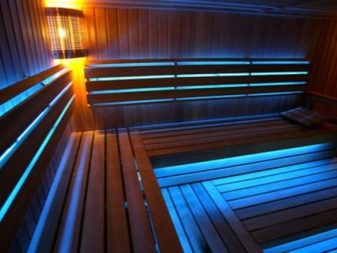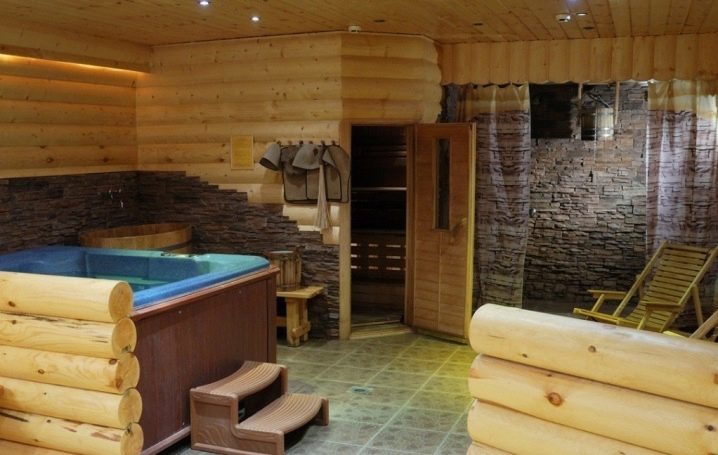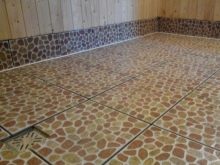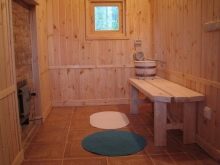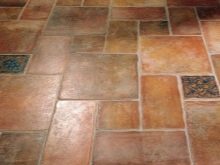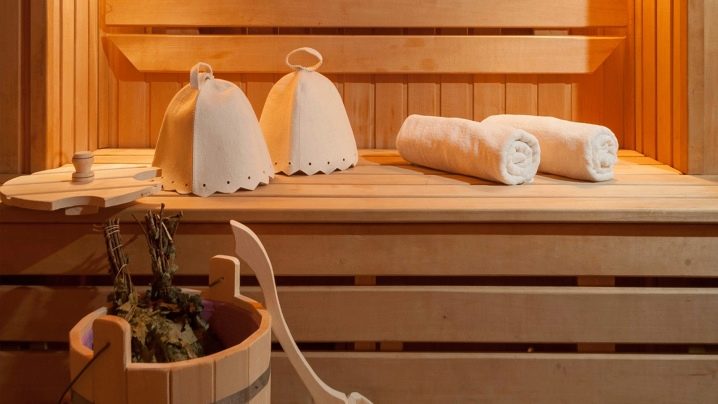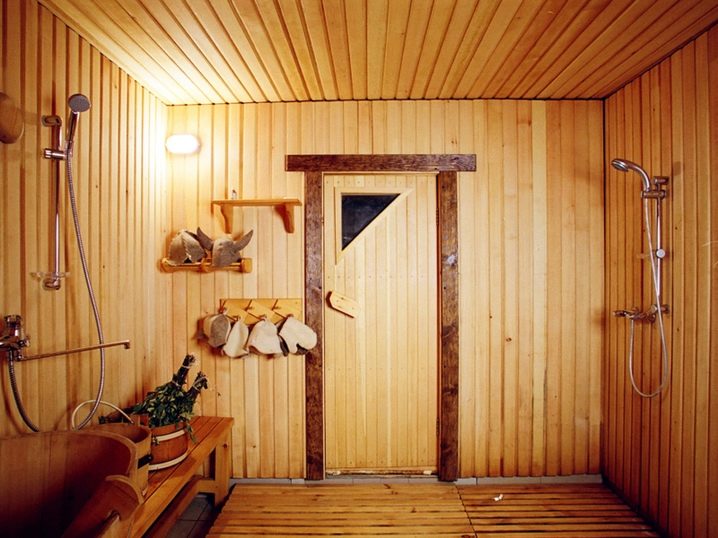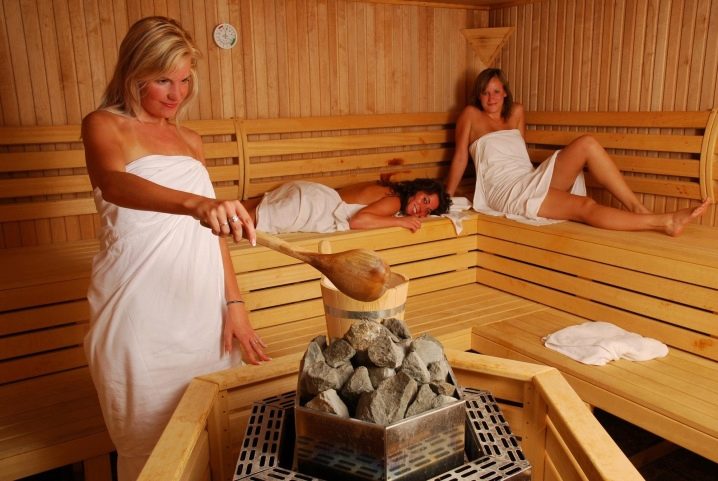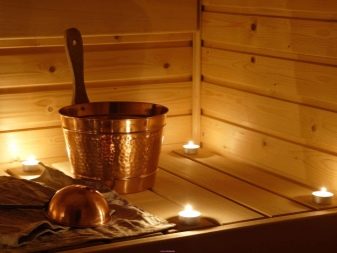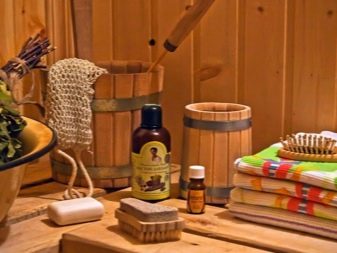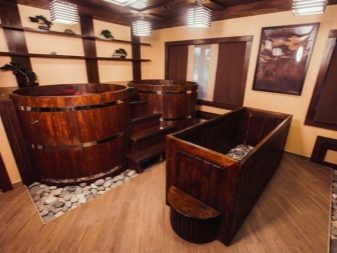Features of Finnish saunas, designs and choice of stove
With the mass advantages of the Russian bath there are advantages to its Finnish counterpart. It is necessary to approach its creation thoroughly and clearly in order to avoid mistakes in design and construction. Consider the features of the Finnish sauna and furnace selection.
What it is?
Both Finnish and Russian baths are subject to the same task: they are designed to cleanse the body and relax in a relaxed atmosphere. But the Scandinavian tradition implies that the air in the bath room should warm up to 70 - 100 degrees, while its humidity can not be more than 20%. This combination will help to feel the real pleasure, as well as get rid of physical fatigue, easily clean the pores of the skin, opening them.
Difference from Russian
The Finnish bath is the hottest and driest among all national analogues of buildings. Its usual condition is warming up to 90 - 100 degrees.You should not be afraid of any negative consequences. If there are no medical contraindications, low humidity will allow you to safely transfer such exposure. Russian approach is different: the air in such a room is humid. Sitting or lying on the top shelves, it does not warm up more than 80 degrees. There is nothing surprising in this, the humidity and temperature in the baths should be inversely proportional.
If the air heating in the Finnish bath reaches the boiling point, and the humidity rises to 25% (only 1–4 more than the maximum permissible value), burns of mucous membranes will inevitably appear. And if the conditions turn out to be worse, in addition, help will be rendered too late, then a burn of the lungs can be obtained, death is possible. It is for this reason that stones in the Finnish bath should not be watered, except in microscopic doses to improve dry air or the need to give it some kind of aroma. The slightest mistake can increase the humidity of the air to a critical, life-threatening value.
Features of the device
To guarantee the special parameters of the Finnish sauna, you have to do it according to an unusual scheme (not like the Russian one).The stones are not placed inside the furnace, they are placed on the surface of it. As a result, the room warms up more quickly, but also cools rapidly. The furnaces themselves are also different. Russian tradition means stoves in which solid fuel burns. The Nordic approach relies on electrical foci.
Floor
They begin to equip the sauna from the floor, then move to the ceiling, the final stage is working with the walls. It is inappropriate to decorate the floor with a tree: it rots too quickly. Only for rarely visited baths, you can prefer wooden flooring, and then only from the most resistant to the action of water and heat rocks. More often, tile is chosen as a floor covering, and a concrete base is poured under it. Through the pit, the water is redirected to the pouring pipe (the hole should be with a slope of 1 - 2 degrees).
The clinker tile is better than the ceramic variety, it does not slip even when wet. On the walls and ceiling mainly applied lining. Lipa gives an attractive pinkish color, aromatizes the room quite well, it is quite durable. Abashi (hardwood) is expensive, but does not contain a single knot or pitch pocket.This wood is relatively light and does not burn the skin when it is very hot. Cedar massif has its advantages. These include:
- ease of machining;
- zero risk of rotting and clogging with fungus;
- pleasant appearance and luxurious fragrance;
- medicinal properties.
It is not recommended to apply larch: there are too many resins in it, which create an increased load on the body during evaporation. Aspen is relatively cheap and can last for many years, which makes it a decent solution in the economy class.
Walls and ventilation
The walls are often trimmed with Canadian and Baltic spruce. When choosing wood, it is recommended to use areas that do not contain resin inclusions. Approximately one sixth of the entire varietal tree is suitable for work, and only from the lower part of the trunk, with the exception of the butt. Heat-treated wood is better suited for walls, its service life increases markedly.
Whatever tree is used in a sauna, its qualities can be manifested only with the qualitative performance of the other requirements for construction. Among them, an important place is occupied by ventilation.A logical step is the use of a bastu-type system, since it is necessary to air the Finnish bath only at the moment when it warms up. The blower of the furnace maintains air circulation throughout the procedure. In the least hot areas you can get by with simple natural air circulation, which is quite enough to maintain a pleasant microclimate.
Oven selection
To visit the steam room brought only joy, you need to choose the right sauna stove. Electric heaters are mostly made of high grade stainless or galvanized steel. Due to this, the environmental and sanitary indicators of structures are always at a high level. Such furnaces can quickly heat the air, using remote controls (built into the housing or separate) to control them. It is worth paying attention to the versions in which there is a built-in steam generator, which allows not to be limited to the traditional Finnish mode (it will be possible to steam, as in a Russian bath).
As for manufacturers, the first lines of the rating are products from: Helo, Harvia, Sawo. The product quality of these three firms is stable, and the involvement of leading designers allows you to create a unique look.If you set the goal of choosing a furnace that runs on wood, you need to focus on products from expensive steel grades containing a significant amount of chromium. Due to this additive, the structures are characterized by increased resistance to heat, serve for a very long time and do not let down consumers.
Firm "Castor" produces furnace enclosures with a thickness of 0.5 - 0.8 cm, and the device is able to achieve an efficiency of 70% (subject to the observance of the rules of circulation). A serious competition to them can make the goods issued under the brand "Harvia", whose fireplaces are cast-iron, and the body is made on the basis of multi-layered steel Emission of gaseous waste is 80% less (this will please connoisseurs of ecology).
Furnace for the Finnish sauna should be equipped with a convective casing. Only such a device allows you to provide the necessary rate of heating air. It must continuously circulate, otherwise it is not possible to support the same regime that glorified the Finnish baths. To prevent burns and loosen hard radiation, users have two options: installing special grids filled with stones around stoves,as well as facing the entire surface of the hull with carefully selected stone slabs.
Projects
The project must be drawn up necessarily, there are no trifles. Finnish sauna type barrels can be made even with their own hands. First you need to select the boards (spruce or pine 9 cm wide and 4.5 cm thick). In most cases, the dimensions range from 250 to 400 - 450 cm, the exact size is determined by the required capacity of the structure. Strong conifer beams should be used as a base, which can be joined for highest strength. When laying the floor you need to create a small slope, with which water will drain better.
Be sure to provide openings for the input of electrical wires. More often in the Finnish baths the roof from a bituminous tile is used, attached by nails and stuck together inside. It is important to think about waterproofing and additional finishing of the roof from the inside, so that it looks more attractive. But it is not enough to make a good project, you need to choose a quality timber, because attempts to save on materials will turn into additional problems. As for beauty, you should focus on your own taste.
Subtleties of construction
Build a sauna with a terrace is not so difficult. The roof can be made with two unequal slopes, internal insulation. For buildings of 7.65 x 7.65 square meters. m should focus on the following parameters:
- roof covering of shingles;
- heating system;
- steam room and washing;
- the allocation of toilet and rest rooms;
- separate technical room;
- foundation with fine deepening of tape type (over the pillow from sand);
- facing of the basement and chimney with natural stone;
- closing ventilation holes with decorative grilles;
The main structural material is glued laminated timber with a polished outer side. Rolls of mineral wool (10 cm in thickness) are used as insulating material. For thermal insulation of the ceiling and walls of the washing, steam room choose aluminum foil. Creating ceilings in other rooms is not necessary: they are successfully replaced by sheeting with rafters. This decision will help to make the space in the bath more, make it original. The floor is made of natural wood, an exception is made only for the washing, where they perform a full-fledged warm floor on the foundation of foam concrete.
To build a Finnish sauna in the house is no worse than in the standalone version. However, you have to create a smaller steam room than usual, because it must keep the temperature for a long time and not consume a lot of fuel. The furnace will have to warm constantly and hard, which is bad for its performance and service life. In most cases, a bath in the house do not more than 6 square meters. m. If properly equip the steam room, visit her at the same time will be 3 - 4 people.
The ceiling is placed at a height of approximately 200 cm: this will allow to maintain an optimal proportion with the door openings. The upper shelves should be about 1 m below the ceiling, the lower ones are trying to do already. Sauna in the house is always done without windows, as sconces are used as lighting. Some designers recommend choosing a backlight system designed to relax the nervous system. It is better to create walls from a bar or logs. For ceilings, beams of an insignificant section are chosen, spaced 0.65 - 0.85 m apart. The floor in the home sauna is usually formed from three layers:
- bitumen based felt;
- cement screeds;
- tiles or ceramic tiles.
When selecting tiles you need to pay attention to the fact that they slid as little as possible. To do this, when purchasing, it is necessary to select a material with non-slip, which is characterized by a rough or slightly relief texture of the surface. The opening of the hood make 0.3 m lower than the level of the ceiling. The inlet of cold air is required to be arranged opposite the outlet. Regardless, the built-in sauna will not allow you to use the pool. For him, just can not find a suitable place. However, neither the floor nor the ventilation will help to maintain a good microclimate if the wrong stones are used in the furnace.
It is recommended to use only four types of rocks:
- jade;
- diabase;
- crimson quartzite;
- volcanic rock
To simplify the work, you can purchase a completely ready-made Finnish bath, which is made of a vertical bar and a wooden shield with thermal and steam insulation. However, not always the size of a typical unit is suitable for a particular house.
Use and safety
It is not enough to build a Finnish bath and complete it: a steam room of this kind requires unusual treatment.You can not use brooms, you can only sit and relax as much as possible. Honey masks, scrubs and moisturizing for the skin are acceptable, but no more. If you apply even a cautious blow with a birch broom, you can cause a skin burn.
Typically, visitors Finnish baths take a shower without soap and other detergents, and when entering the steam room they sit down and rest. The first call is limited to a maximum of 5 minutes, even for healthy and physically strong people. You can not take this time as a certain norm. If negative feelings have arisen earlier, it's time to immediately leave the steam room and go to the waiting room. In the first minutes you need to stand under a cool shower or dive into the pool.
As well as after any other bath, you should refrain from the use of alcohol, coffee, sweet soda, cocoa, chocolate bars and similar products. In the sauna they sweat a lot, they should drink more. Each subsequent entry into the steam room allows an increase in time spent, but you can not go there more than six times and stay longer than 15 minutes. No physical fitness or well-being justifies violations of this restriction.Only at one time should be carried out in the sauna (even in its relatively cold part) a maximum of 3 hours.
Sitting in the rest room, it is worth drinking:
- clear warm water (non-carbonated);
- tea (not too strong);
- mors;
- kvass or another natural drink.
After the final exit from the steam room, you can use shampoo, soap or shower gel. The benefits of staying in the sauna are beyond doubt. This procedure strengthens the heart, develops the lungs as effectively as intense exercise on the street. Any organs and tissues are better supplied with oxygen, slimming is possible (the lasting effect of a sauna is only in combination with a decrease in diet and increased physical activity). The skin and muscles are quickly restored, the body is generally relaxed.
Contraindications
It is important not to forget about the contraindications for a visit to the sauna. You can not go there if:
- body temperature above normal;
- confirmed infectious disease;
- exacerbated non-infectious disease;
- there is an oncological disease;
- found serious problems with the heart, blood vessels, skin and lungs.
Only with the permission of a doctor can everyone in the 60 years old who suffers from chronic inflammation or high blood pressure can visit a Finnish sauna.Up to 4 years old, it is unacceptable to bathe in the sauna, for older children a full examination and the consent of the doctor are required. Observing the recommendations for the construction of a Finnish sauna, the arrangement of its internal space and the use of a sauna, you can achieve a good result in construction and improve your health.
You can learn more about the features of the Finnish sauna and the rules for visiting it in the following video.

